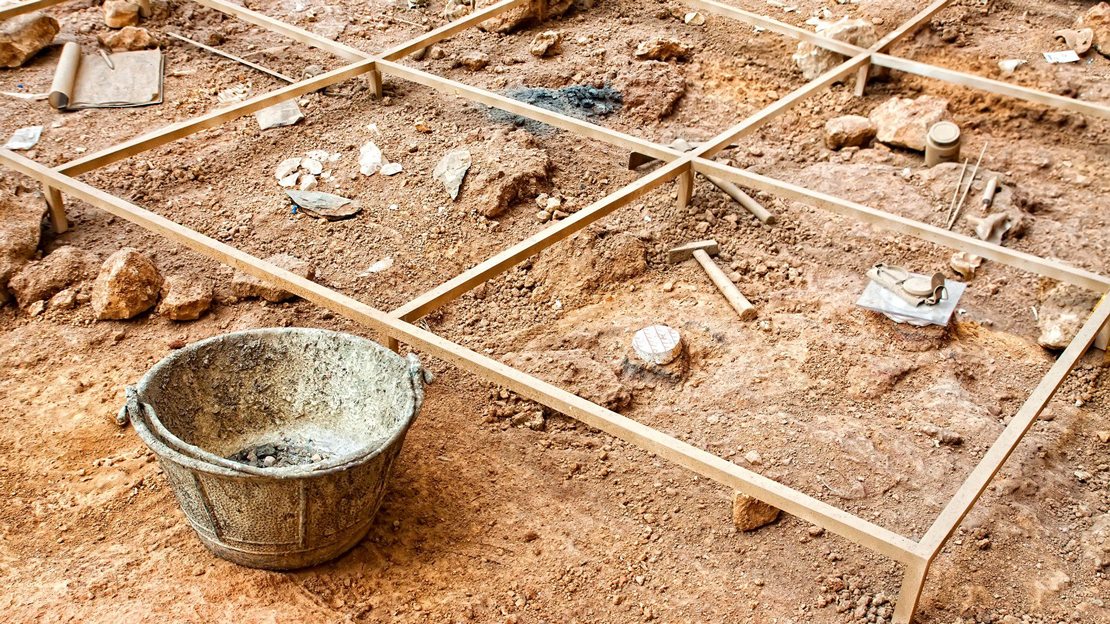Virtual Scout Archaeology Day
Live Online
Saturday, Jun. 1, 10:00 am - 1:00 pm ET
$15 per student/scout
Register
Attention scouts: Ever thought of becoming an archaeologist when you grow up? Have you ever wanted to know how experts learn the age of artifacts? Or how we keep important archaeological sites safe to teach future generations about people from the past?
Join us for Virtual Scout Archaeology Day. Penn Museum educators are teaming up with University of Pennsylvania archaeologists for a series of interactive virtual workshops. We'll share everything you ever wanted to know about the field of archaeology.
The program consists of three 45-minute sessions with 15-minute breaks in between each session. We will focus on the following themes:
- Careers in archaeology and how one becomes an archaeologist
- The archaeological process and how archaeologists uncover and study the past
- How archaeologists determine the age of artifacts
- How organizations and government institutions preserve and protect archaeological sites
Workshop activities are specially designed for scouts ages 11–17, and fulfill several of the requirements for the Archaeology BSA merit badge. However, anyone interested in learning more about the field of archaeology is welcome to attend. Adult participation is free with scout registration.
All programs will be observed by a certified merit badge counselor who has completed Youth Protection Training and has up-to-date Pennsylvania State Child Abuse Clearances.
RegisterFrequently Asked Questions:
Participation in this program will give scouts the resources to fulfil the following requirements for the BSA Archaeology merit badge:
- Describe what archaeology is and explain to your counselor how it differs or relates to other fields of study such as anthropology, geology, paleontology, and history. Explain how archaeology is different than artifact collecting or treasure hunting.
- Describe each of the following steps of the archaeological process: site location, development of background research and a research design, site survey and fieldwork, artifact identification and examination, interpretation, preservation, and information sharing.
- Describe at least two ways in which archaeologists determine the age of sites, structures, or artifacts. Explain what absolute dating and relative dating are.
- Do the following:
- Learn about the federal laws and international conventions that protect archaeological sites. Find out if your state, county, or local government has regulations that apply to archaeological or historic sites.
- Identify a national, international, or local organization that helps to protect archaeological sites.
- Do the following:
- Explain why it is important to protect archaeological sites.
- Explain what people should do if they think they have found an artifact.
- Describe the ways in which you can be a protector of the past.
- Identify three career opportunities in archaeology. Pick one and explain how to prepare for such a career. Discuss with your counselor what education and training are
required and explain why this profession might interest you.
We will also offer a handout with resources related to several Penn Museum related archaeological digs, which can help fulfil the requirements for item #4: Learn about a combined total of five archaeological sites located both within and outside the United States.- For EACH site you research, point it out on a map and explain how it was discovered. Describe some of the information about the past that has been found at each site. Explain how the information gained from the study of these sites can help answer questions that archaeologists are asking and how the information may be important to people living today. Compare the relative ages of the sites you research.
- Choose ONE of the sites you picked and give a short presentation about your
findings to a Cub Scout pack, your Scout troop, your school class, or another group.
If they are in the area, they can also combine their Virtual Scout Archaeology Day with a visit to the Penn Museum, which will fulfil requirement #7a (Visit a museum to observe how artifacts aid in conveying history). It will be up to the scouts to complete the remaining requirements.



